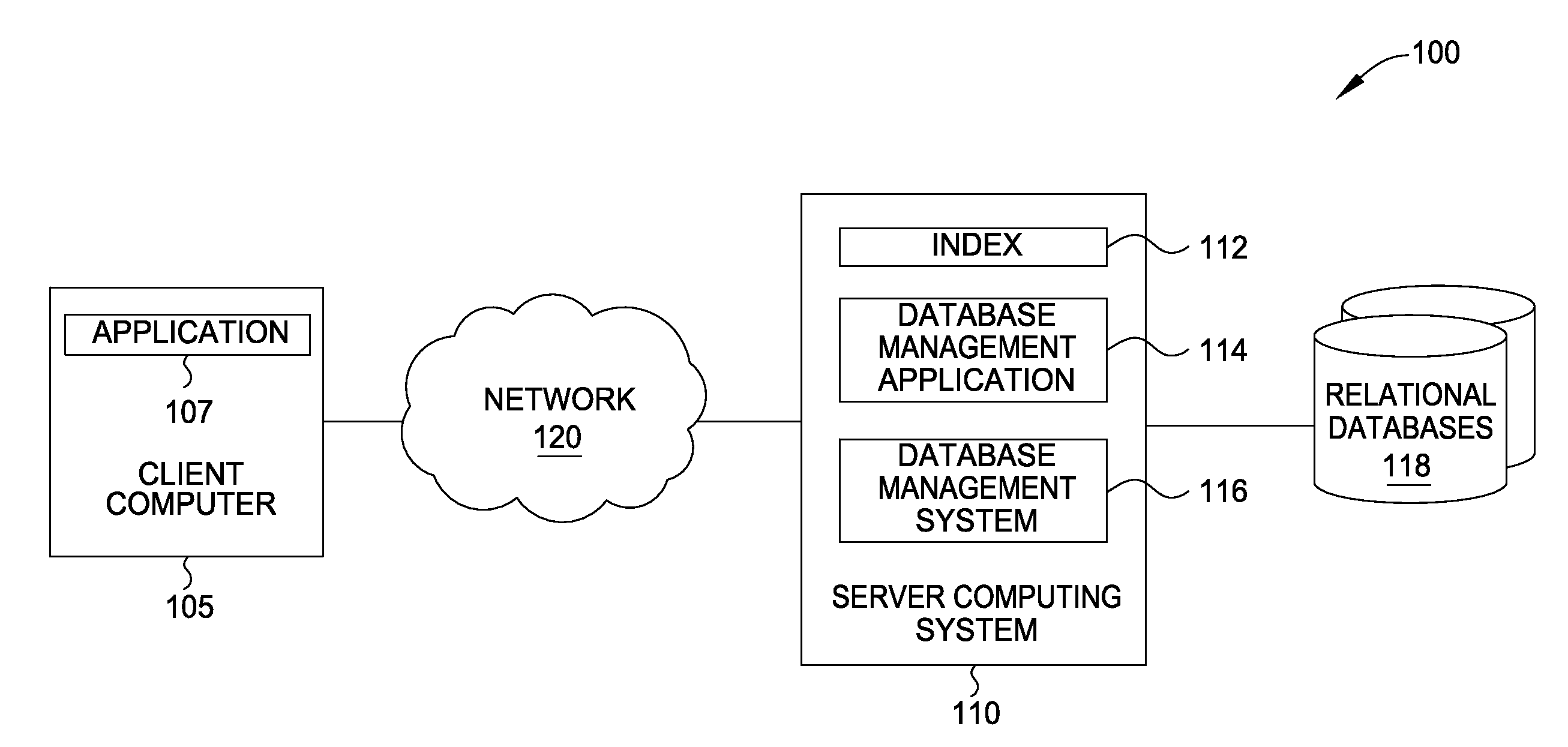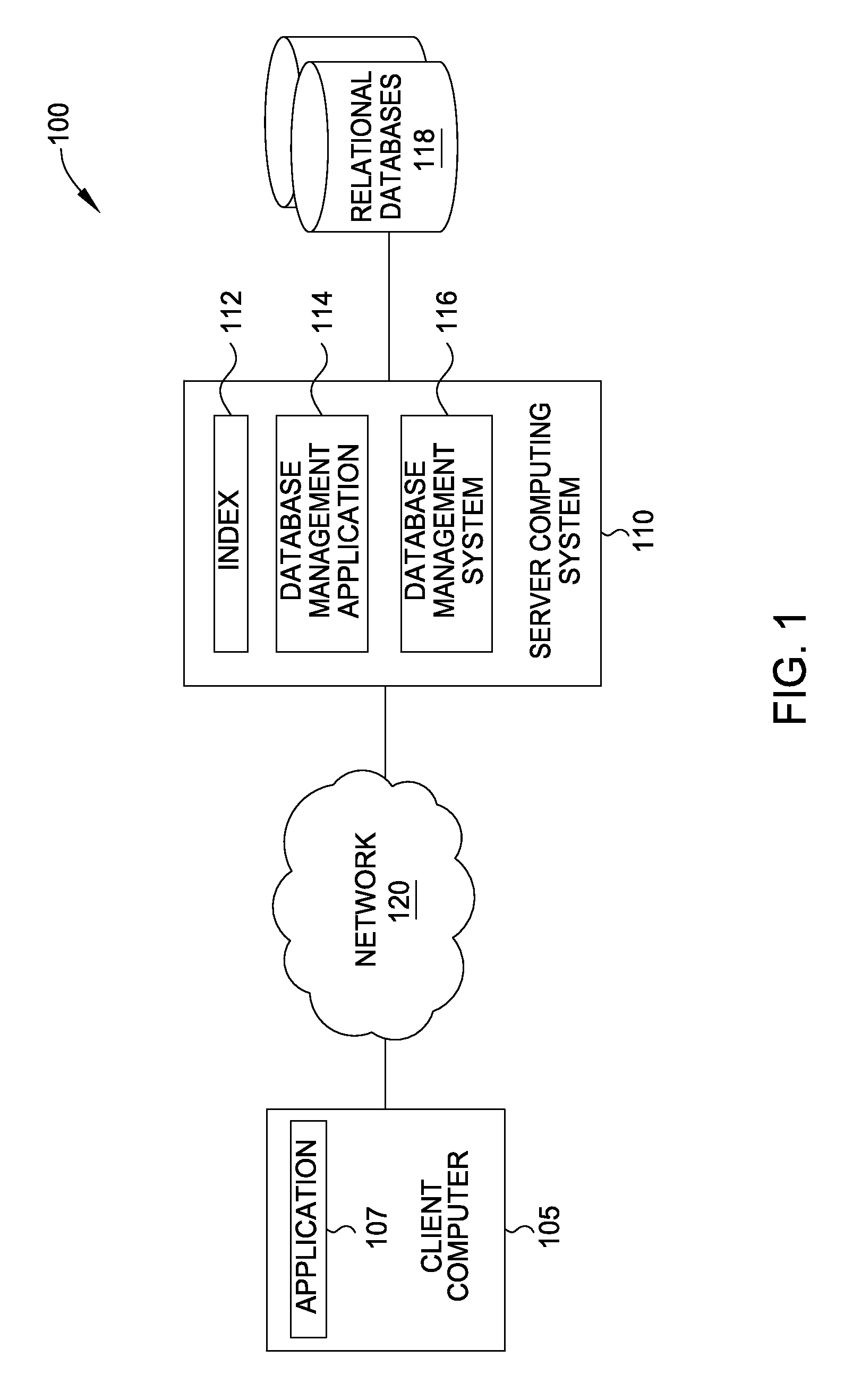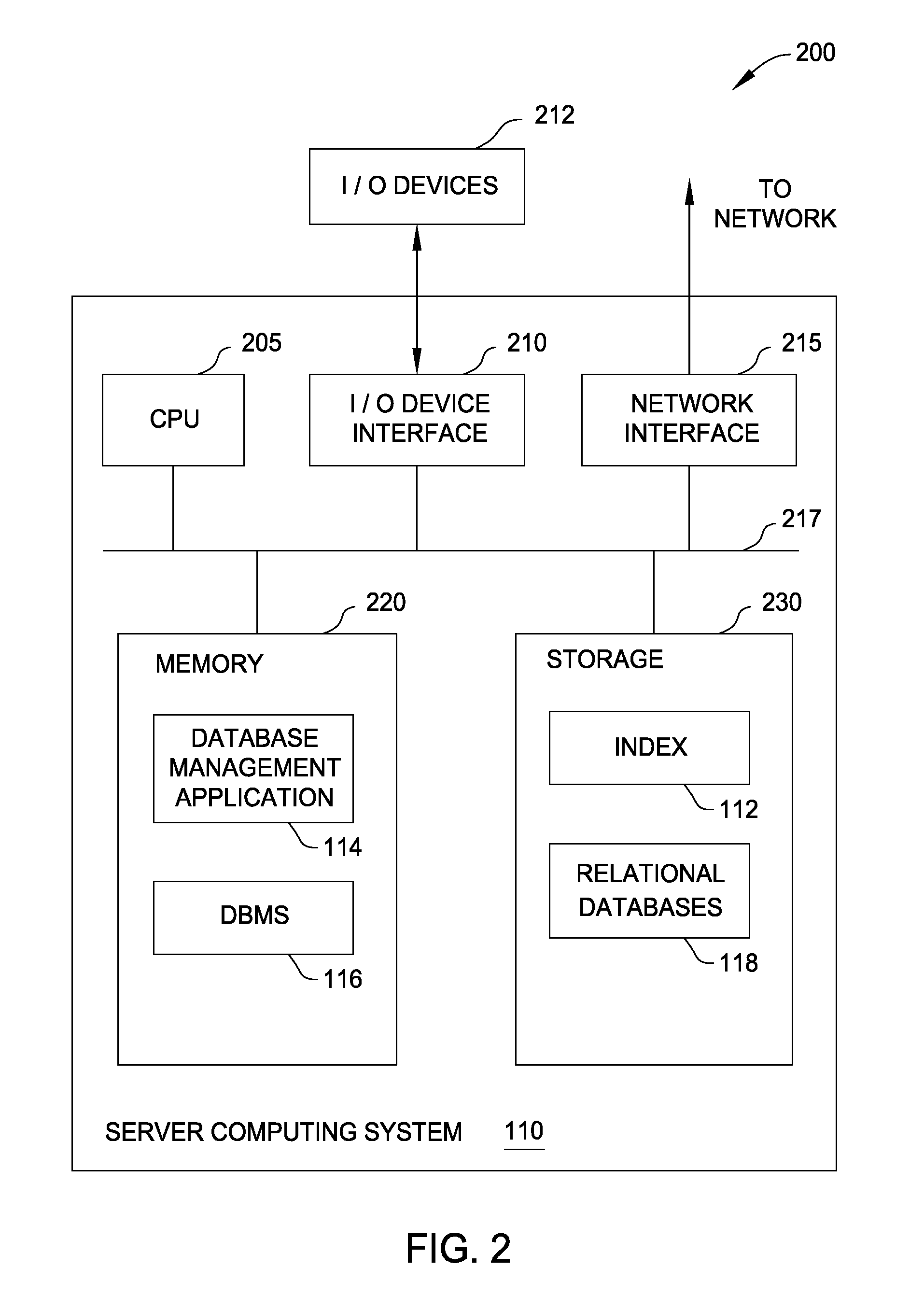Dynamically adjust duplicate skipping method for increased performance
- Summary
- Abstract
- Description
- Claims
- Application Information
AI Technical Summary
Benefits of technology
Problems solved by technology
Method used
Image
Examples
Embodiment Construction
[0016]Embodiments presented herein provide techniques for selecting a method to skip duplicate values when executing a query statement. For example, the embodiments provide techniques for selecting a skipping method when executing a Structured Query Language (SQL) statement against a relational database. In one embodiment, an estimated distance between two distinct and sequential keys in an index of the database is used to determine an appropriate skipping method to perform in response to a query statement.
[0017]In one embodiment, when executing a query statement requesting distinct values, a database management application probes an index tree of the database table identified in the query. The database management application scans a given index and estimates a distance between a current index key and a next distinct (i.e., non-duplicate) index key.
[0018]Based on the estimated distance between keys, the database management application may select a corresponding method, such as a “bi...
PUM
 Login to view more
Login to view more Abstract
Description
Claims
Application Information
 Login to view more
Login to view more - R&D Engineer
- R&D Manager
- IP Professional
- Industry Leading Data Capabilities
- Powerful AI technology
- Patent DNA Extraction
Browse by: Latest US Patents, China's latest patents, Technical Efficacy Thesaurus, Application Domain, Technology Topic.
© 2024 PatSnap. All rights reserved.Legal|Privacy policy|Modern Slavery Act Transparency Statement|Sitemap



